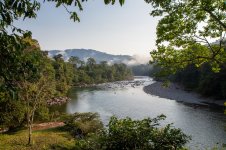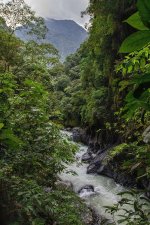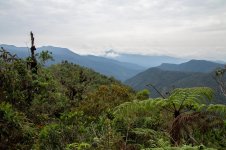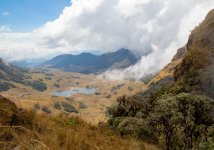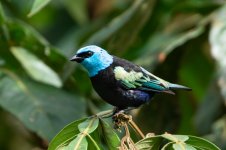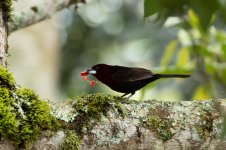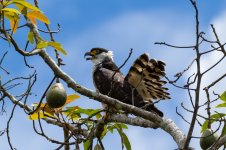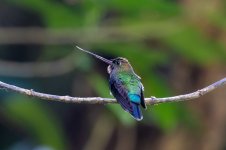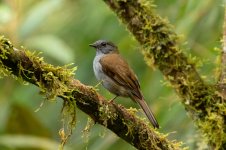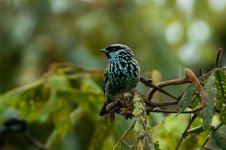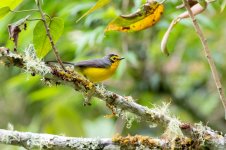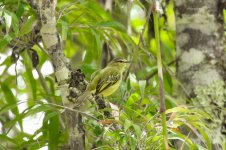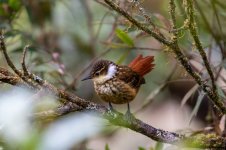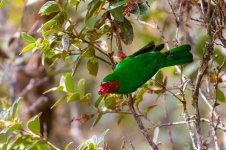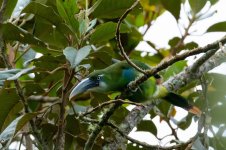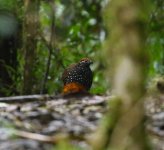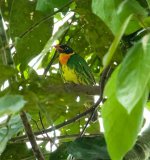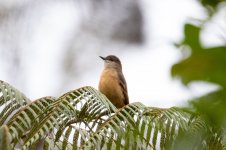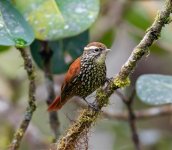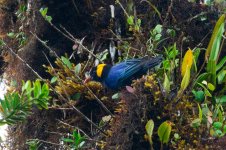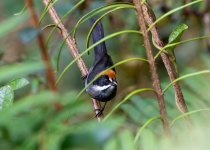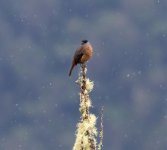Hi everybody,
This is my first contribution of this kind, I hope you'll enjoy it, and maybe it will motivate some of you to go birding in this wonderful region!
As some of you will have gathered from my various posts on the ID forum in the past months, I've been in Pasco, central Peru, since January. And while lockdown has of course meant spending a lot of time indoors, I was able to do some good birding until March and then again this summer.
All summed up, we are talking about some 90 days in the forest and 500+ species, so I won't do a day by day trip report. Rather, I'll just talk about the different sectors of the nearby Yanachaga Chemillén National Park, and some of the avian highlights.
There are some well-known birding hotspots west, north, and south of here, but for some reason Pasco itself is still visited by few birders, and the bulk of the observations are done by a few locals. As a result, there is still much to be discovered. Furthermore, the national park itself covers only about 5% of the Pasco department, but it still encapsulates a remarkable range of ecosystems, from the Amazonian lowlands to peaks that reach nearly 4000 meters above sea level.
To give you an idea, here are photos of the four main access points to the park:
- El Paujil, where the Andean foothills meet the Amazonian lowland forests (350-750 masl)
- Huampal, in the spectacular Huancabamba canyon, has both lowland and montane elements (800-1400 masl)
- San Alberto is typical montane forest (2400-3000 masl)
- Santa Bárbara has some lovely elfin forest and dry puna above the tree line (3000-3800 masl)
This is my first contribution of this kind, I hope you'll enjoy it, and maybe it will motivate some of you to go birding in this wonderful region!
As some of you will have gathered from my various posts on the ID forum in the past months, I've been in Pasco, central Peru, since January. And while lockdown has of course meant spending a lot of time indoors, I was able to do some good birding until March and then again this summer.
All summed up, we are talking about some 90 days in the forest and 500+ species, so I won't do a day by day trip report. Rather, I'll just talk about the different sectors of the nearby Yanachaga Chemillén National Park, and some of the avian highlights.
There are some well-known birding hotspots west, north, and south of here, but for some reason Pasco itself is still visited by few birders, and the bulk of the observations are done by a few locals. As a result, there is still much to be discovered. Furthermore, the national park itself covers only about 5% of the Pasco department, but it still encapsulates a remarkable range of ecosystems, from the Amazonian lowlands to peaks that reach nearly 4000 meters above sea level.
To give you an idea, here are photos of the four main access points to the park:
- El Paujil, where the Andean foothills meet the Amazonian lowland forests (350-750 masl)
- Huampal, in the spectacular Huancabamba canyon, has both lowland and montane elements (800-1400 masl)
- San Alberto is typical montane forest (2400-3000 masl)
- Santa Bárbara has some lovely elfin forest and dry puna above the tree line (3000-3800 masl)




